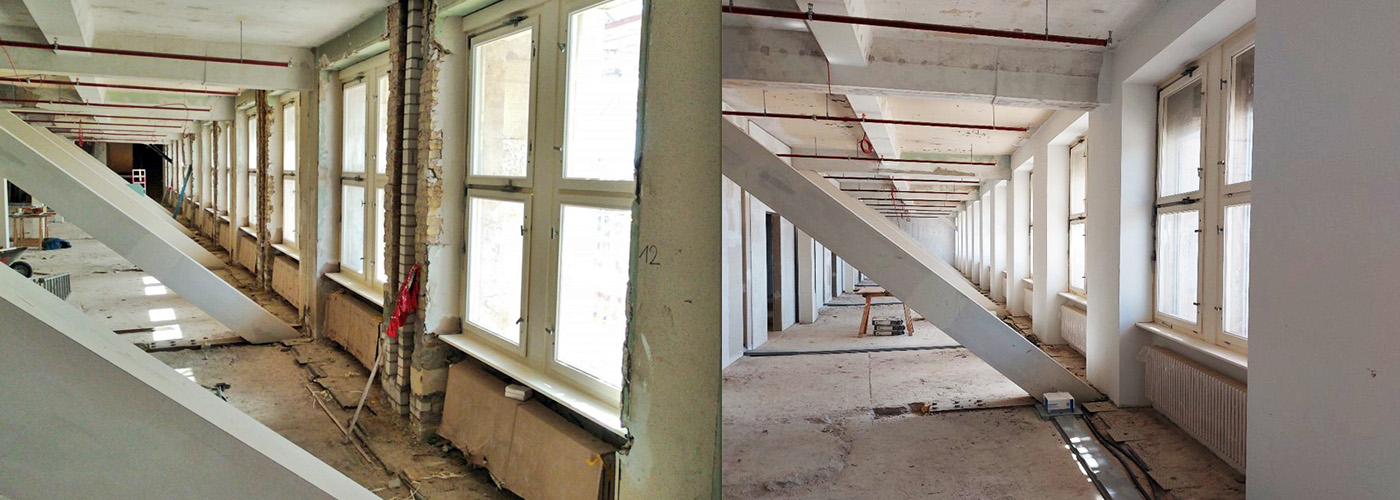Tempelhof Tower | Berlin
The western head building area and the tower of Berlin's Tempelhof Airport are currently being renovated in line with the requirements of a preservation order and will be transformed into an information and event venue with an observation deck by 2023. As the work progressed, it quickly became clear that the originally tendered interior insulation system with mineral foam panels would not work.
Listed masonry from the 20s
Berlin's Tempelhof Airport closed its doors on October 30, 2008. Since then, the purpose-founded company Tempelhof Projekt GmbH has been working to develop the building complex so steeped in history (keyword: Berlin Airlift) into an "experimental site and new urban quarter for art, culture and the creative industries". The western head building area and the tower are currently being renovated in accordance with the preservation order and will be transformed into an information and event venue with an observation deck by 2023.
What had to be taken into account in this project was and still is that the building is a listed building and the building fabric was only allowed to be changed to a small extent. As the work progressed, it also quickly became clear that the interior insulation system with mineral foam panels that had originally been put out to tender would not work. The unevenness in the masonry was too severe.
Cavity and joint free insulation
An alternative to mineral foam boards was needed - and was found with the sprayable insulation technology maxit ecosphere.
In the first step, the substrates were cleaned and primed. The aforementioned preservation order was the decisive factor in retaining parts of the old plaster layers and paint coats. The partial Heraklit cladding of the pillars is also based on the requirements for the preservation of historical monuments and, in connection with this, the existence of old heating shafts on the pillars. After positioning the silos and instructing the plasterers, the application of maxit ecosphere began in January 2022. Due to the uneven subsoil, the insulation thicknesses varied quite considerably, ranging from 40 to 120 mm. Up to 100 mm, the sprayable ecosphere insulation can do without a plaster base! The edges of the pillars were not plastered with the aid of edge profiles, but by conventional battening on and battening off. It was important here not to apply another layer of eco 71 directly to the "front side" of the maxit eco 71, but to prepare the material (after setting) beforehand with maxit prim 1070 and maxit eco 70. This ensured adhesion between the layers.
After complete drying of the insulation, the reinforcement layer consisting of maxit eco 79 and fabric could be applied. The final layer was a felted finishing plaster of maxit ip 305 purcalc Schweißputz.
Innovation meets history
Seamless thermal insulation without the need to level out unevenness, prevention of waterlogging and mold, and thus thoroughly living-healthy interiors - maxit ecosphere was able to impress at the historic Tempelhof Airport. The innovative insulation was used in the 30 x 70 meter West Head Building over five floors. The top level of the building is to serve as an exhibition space in the future, while the floors below are intended for studios and offices. An impressive highlight at the very top is the roof terrace with a glass tower and 360° panoramic view.
